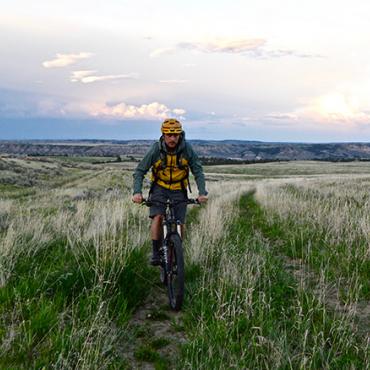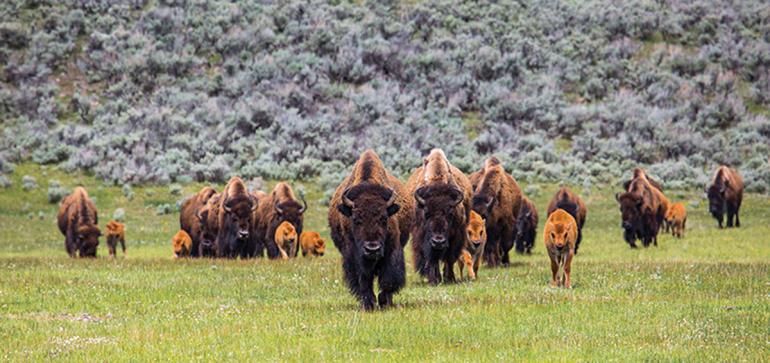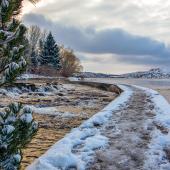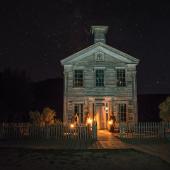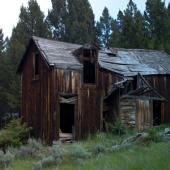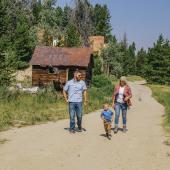Valley-Ho
A world away, close to home.
Fifty-four miles: that’s the distance between Gardiner and Livingston—and that short distance holds limitless adventure. But how do you distill all those options into a single weekend? I’m glad you asked.
Southern Exposure
The best way to manage the valley’s variety is to break it up geographically. For the southern end, camp at Canyon Campground, north of Gardiner along Hwy. 89. This low-elevation Forest Service campground is just across from the Yellowstone River and will be dry early; plus you don’t have to worry about wet access roads, as the campground is right on the highway. Canyon is open year-round and is first-come, first-served. Later in the spring, expect some crowds as the summer hordes descend. If you’re not into early-season camping, Gardiner has plenty of indoor options. Availability fluctuates, so book ahead of time.
A basecamp in or near Gardiner puts Yellowstone National Park in play, and spring is a great time for wildlife watchers, as newborns abound. The northwest corner of Yellowstone is fairly dry, so map out a few short hikes to get the blood flowing and bring your camera. Several trailheads between Gardiner and Tower Junction have good options. If you do head out on a hike, carry bear spray. Spring bears are hungry, and while they won’t necessarily see you as food, they might see you as a threat to a nearby cache. Take every precaution.
Whether you’re sleeping inside or out, the southern portion of Paradise Valley is a great basecamp for river enthusiasts. Pre-runoff, the fishing can be excellent, either on foot or by boat. Once melt-off begins, it’s time for whitewater. One of the area’s most famous sections of rapids—Yankee Jim Canyon—is nearby. Run it on your own in a raft or kayak, or hire an outfitter like Montana Whitewater if you’re new to the river.
No day outdoors is complete without good food and drink. Around Gardiner, the Iron Horse Bar & Grill is your quintessential western pub. For more refined fare, check out the new-ish Yellowstone Grill, especially for breakfast. If you’re in a hurry, coffee and an egg sandwich from Tumbleweed Café is the way to go.
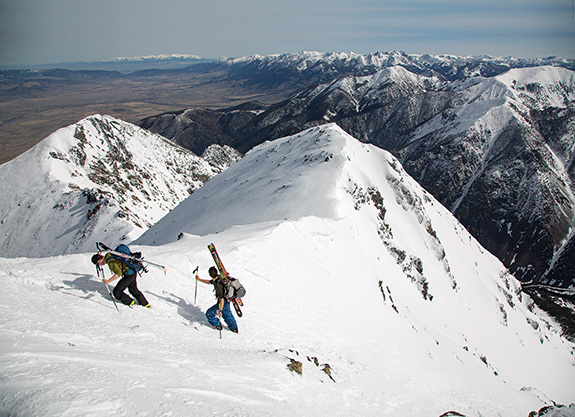
Grunting up Emigrant Peak
Halfway Home
If you’re staying mid-valley, camp at Mallard’s Rest. This Fish, Wildlife & Parks access site has 13 designated campsites, and is situated right at a large bend in the free-flowing Yellowstone River. There are fantastic views of Emigrant Peak to the south and the northwest portion of the Absarokas—or Western Beartooths, to be more geologically precise—to the north. If you fish, this is a great put-in or take-out, as there is a boat ramp on premises. It has the added benefit of being close to Chico, and you’ll more than likely be soaking at some point during the weekend.
Mallard’s is also a great jumping-off point for a ski tour of Emigrant Peak. This is a big one, so check conditions, plan ahead, and know your limits. If it’s in your wheelhouse, go for it. You won’t be disappointed, by the views or the skiing.
One drainage to the north, Mill Creek is calling your name, and you can answer without moving camp. When the Yellowstone gets blown out, ply Mill Creek’s deep pools for rainbows and cutthroats. If the dirt is dry, hop on your bike and pedal the winding old logging roads until you top out high above the canyon floor; look west toward the Gallatin Range for some fantastic views. The whole area burned recently, exposing every nook and cranny of the landscape.
One you’ve worked up an appetite, head to the Old Saloon in Emigrant for the sliders. If it’s happy hour, visit Pine Creek Lodge and get the mac-and-cheese, which comes loaded with bacon, and a Katabatic ale; the outdoor seating only adds to the atmosphere.
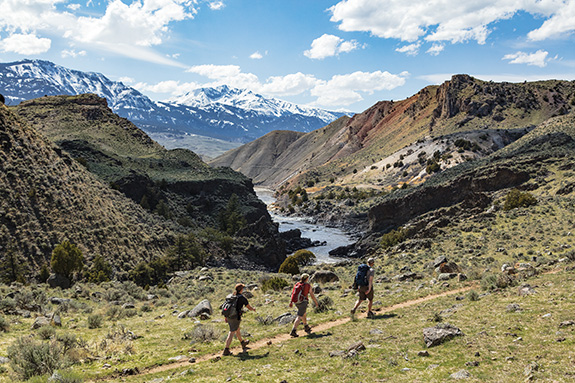
High above the Yellowstone
Just Over the Pass
For folks unwilling to journey too far south from Livingston, camp at Pine Creek. The campground opens officially mid-May, but if the road is clear, you can treat yourself to some free access. This is also a great basecamp for hiking to Pine Creek Falls, or for the more ambitious and capable, skiing some spring corn on Black Mountain. This is expert-level skiing due to the long approach and steep terrain.
Over skiing after a long winter? Find the newly rerouted Suce Creek Trail. Recently, a range of user groups, including mountain bikers, wilderness stewards, and the Forest Service, put in work on Suce Creek, improving some unsustainable sections and enhancing trail quality. With so much wilderness surrounding Paradise Valley, the idea was to add a more bike-friendly trail to the Forest Service’s inventory. Things will most likely be snowy and wet early in the season, so wait for this one to dry out. Contact the Forest Service with questions about conditions.
With peaks skied, rivers run, and fish caught, it’s time to go home. But you’ll be back—you’ve only scratched the surface of what Paradise Valley has to offer.Livingston’s food options are well documented, but that doesn’t mean we won’t repeat the praise. Gil’s Goods is a favorite for breakfast, and a pizza at the Murray always hits the spot before heading back over the pass toward Bozeman.

